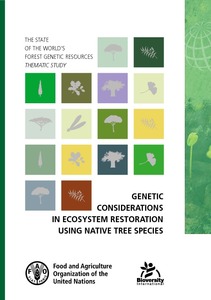Land cover changes in the Lachuá region, Guatemala: patterns, proximate causes, and underlying driving forces over the last 50� years
Identifying the patterns of land cover change (LCC) and their main proximate causes and underlying driving forces in tropical rainforests is an urgent task for designing adequate management and conservation policies. The Lachuá region maintains the largest lowland rainforest remnant in Guatemala, but it has been highly deforested and fragmented during the last decades.



